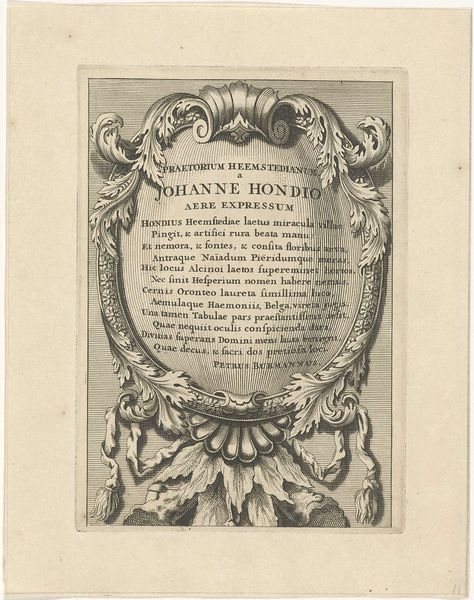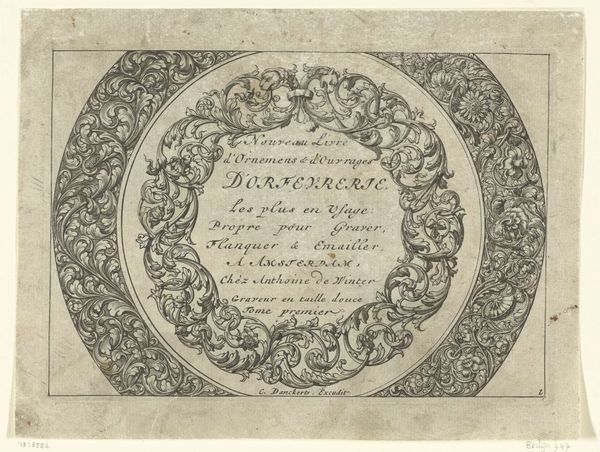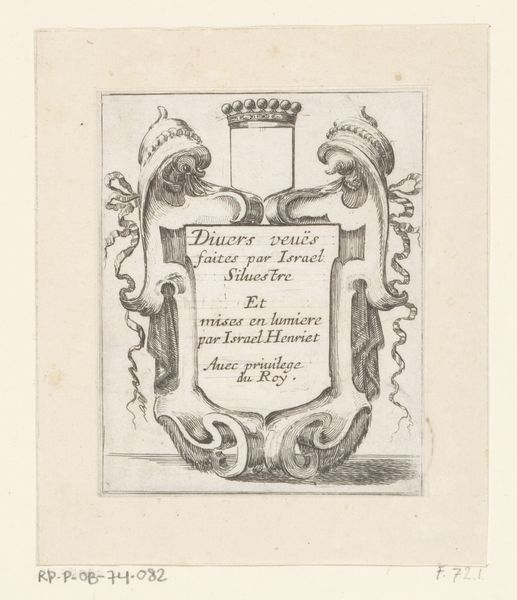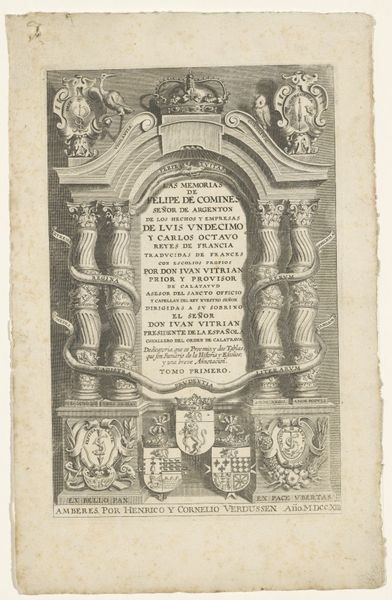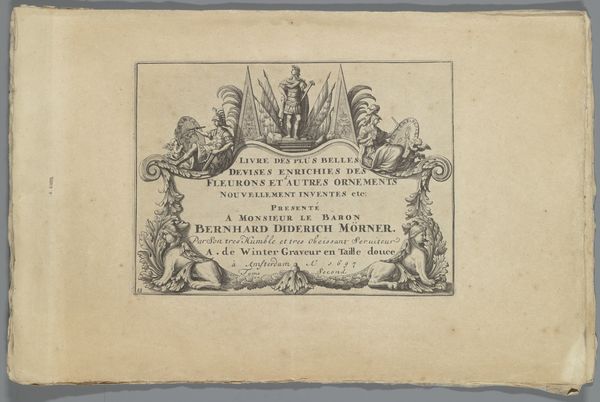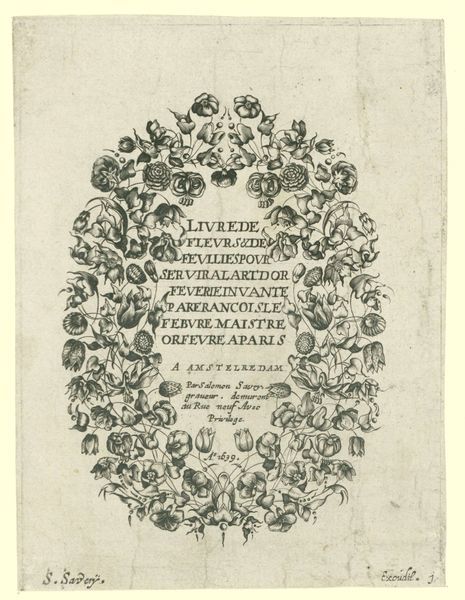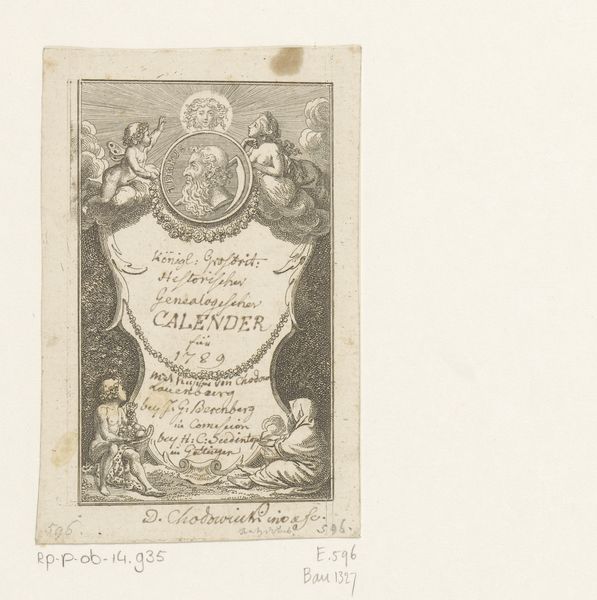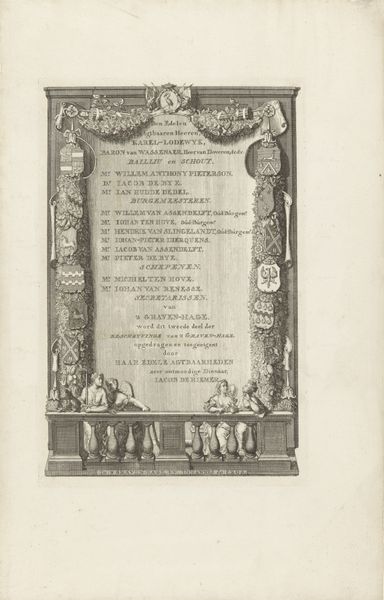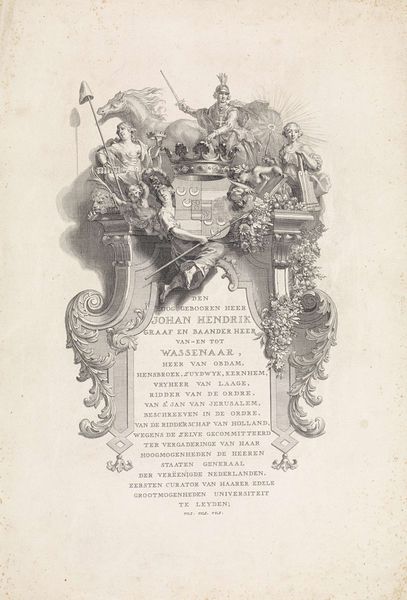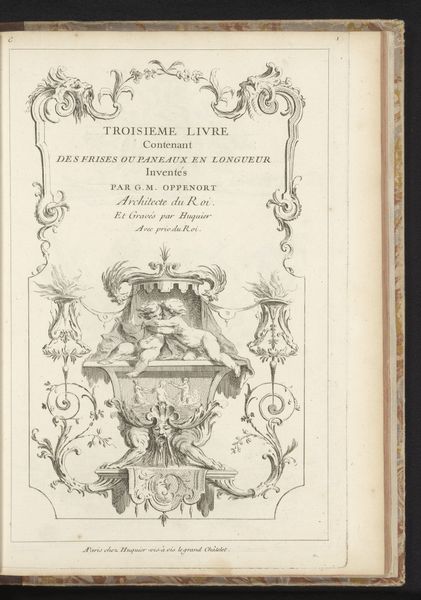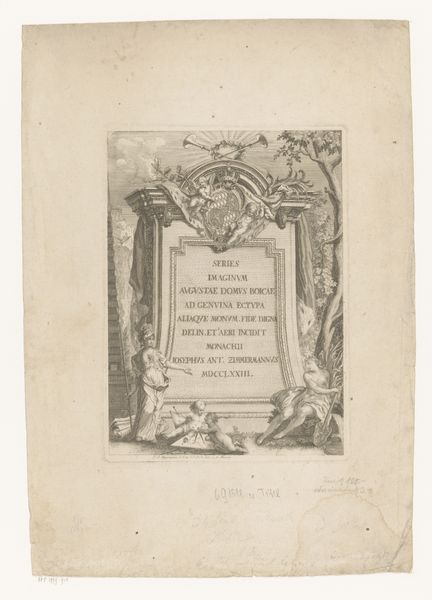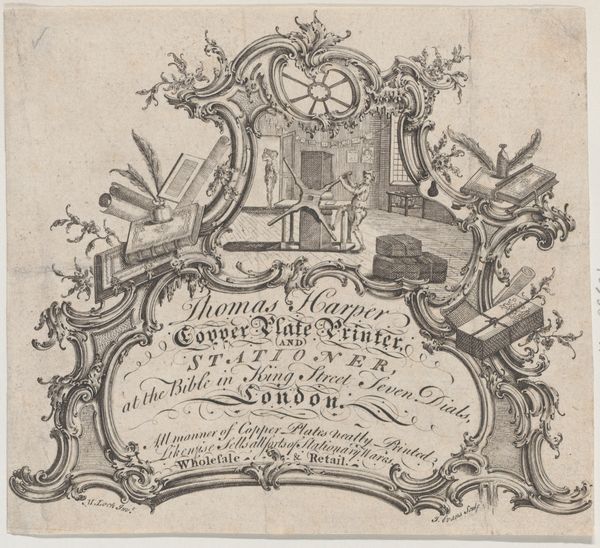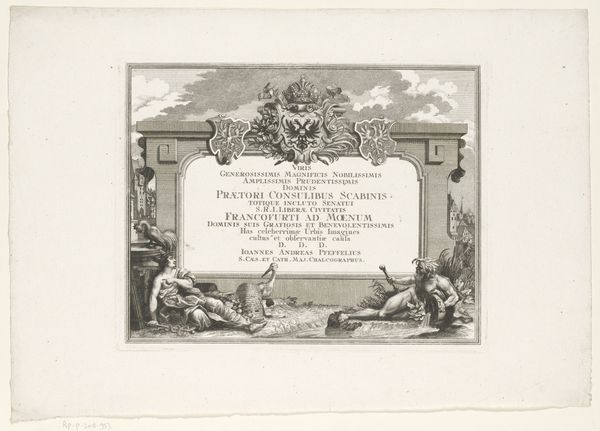
graphic-art, print, engraving
#
graphic-art
#
baroque
# print
#
old engraving style
#
pen-ink sketch
#
decorative-art
#
engraving
Dimensions: height 147 mm, width 90 mm
Copyright: Rijks Museum: Open Domain
Curator: This delicately rendered print is entitled "Zes putti met een doek," dating back to 1754, courtesy of Noël Le Mire. It resides here at the Rijksmuseum. Editor: It's incredible, the fineness of the lines almost makes it look like a drawing rather than an engraving. I’m struck by how many cherubs they crammed into such a small space! It’s quite ornate. Curator: The profusion of cherubs, or putti, speaks to the decorative style popular during the Baroque era. Note how the artist's labor is completely visible through the intricate hatching. It’s printed, but it still showcases specialized craft. Editor: Right, and placing these little laborers all over the piece serves a specific function—the cherubs essentially frame a title page. This tells us a lot about book production and distribution during that era. It was produced in Amsterdam and advertises a translated volume of classical works. The publishers clearly wanted to impress potential readers. Curator: And to signal quality, no doubt. Think about the division of labor here – the patron or publisher, the translator, the printer, and the engraver like Le Mire all contribute to its existence. This points to a growing market in luxury goods. The print serves both aesthetic and commercial functions. Editor: Precisely. The very act of translation – of making classical texts available in vernacular languages – speaks volumes about shifts in social and intellectual culture. Books are becoming more widely available and appeal to a broader public. Curator: I'd add that the elaborate embellishments aren't merely decorative. These additions create symbolic value. Through ornamental design and repeated cherubic forms, we read it as something to be coveted. Editor: A fascinating example of how even a seemingly simple print reveals so much about the artistic, commercial, and intellectual landscape of the 18th century. Curator: Indeed, examining such objects shifts our gaze away from just aesthetic beauty to consider systems of production and exchange.
Comments
No comments
Be the first to comment and join the conversation on the ultimate creative platform.
